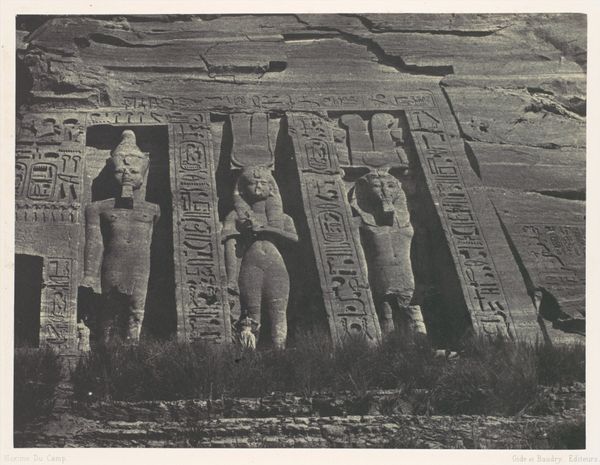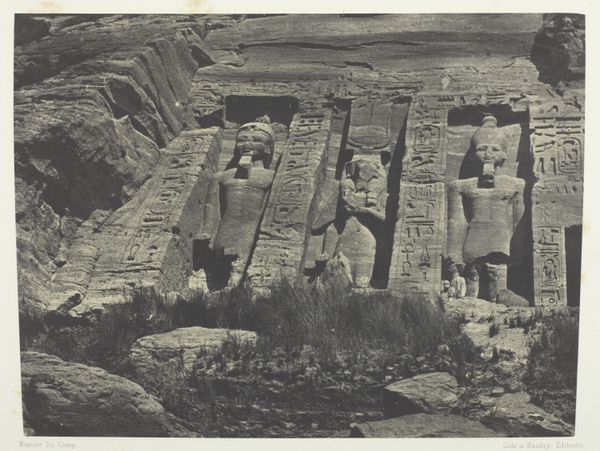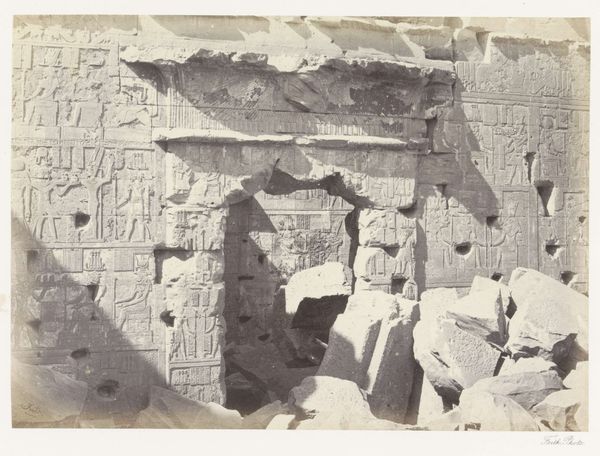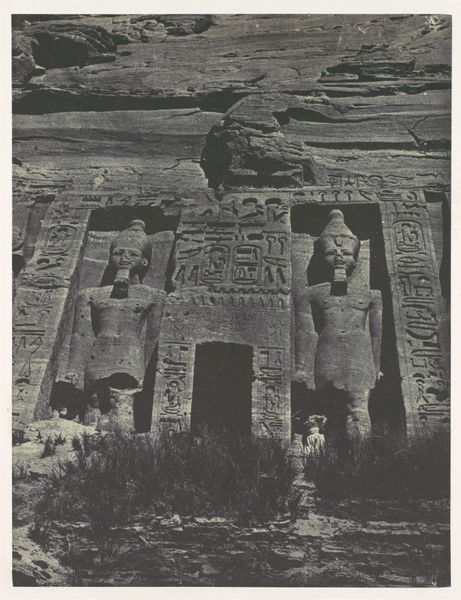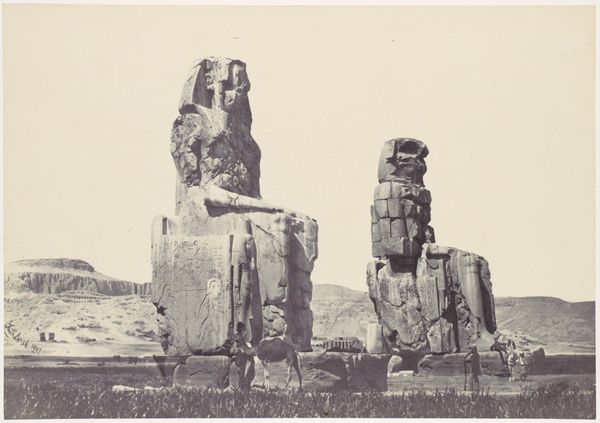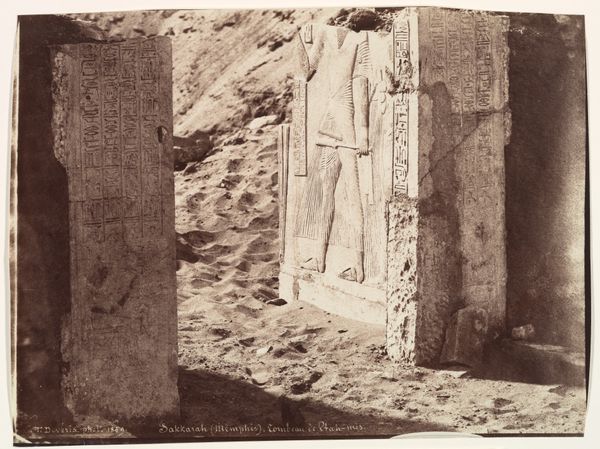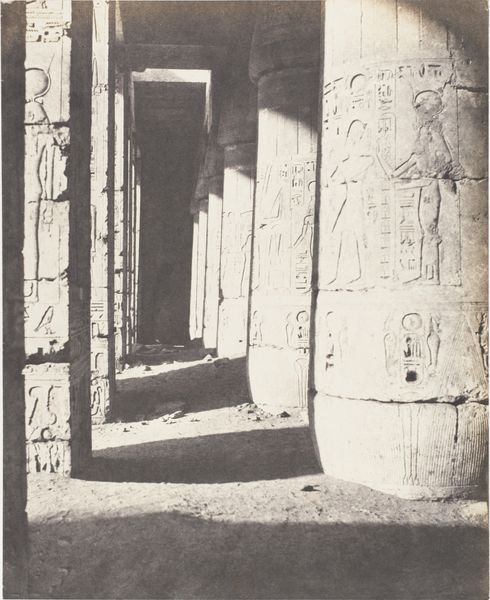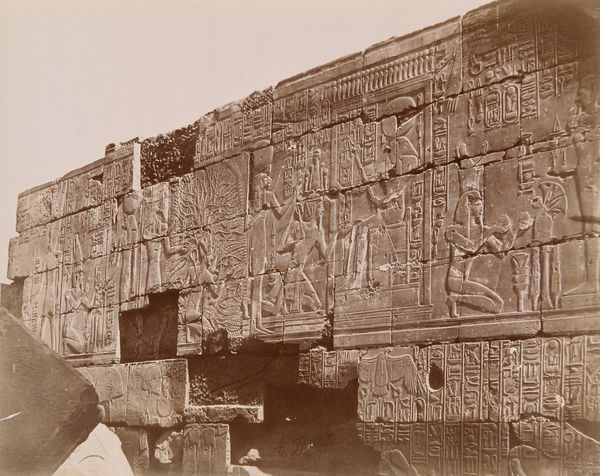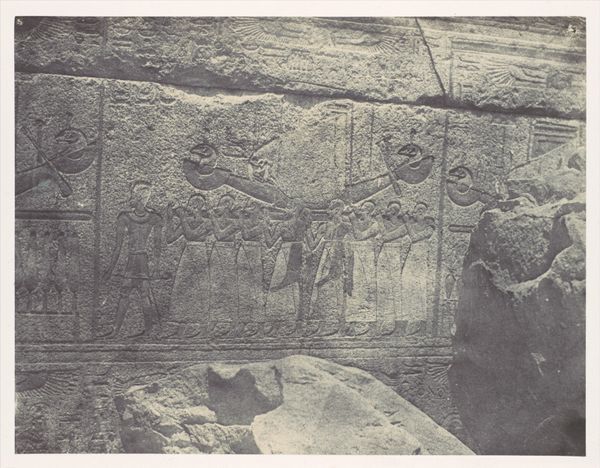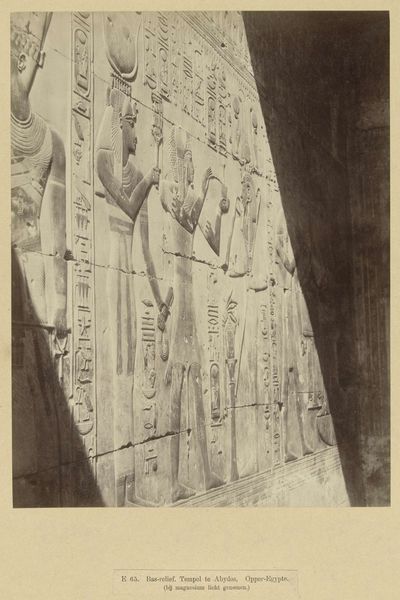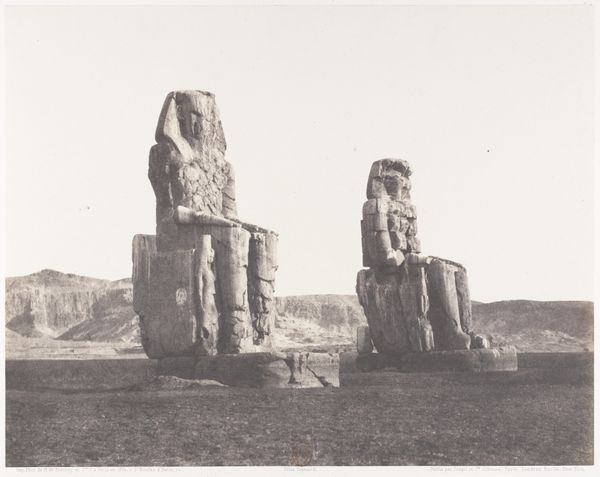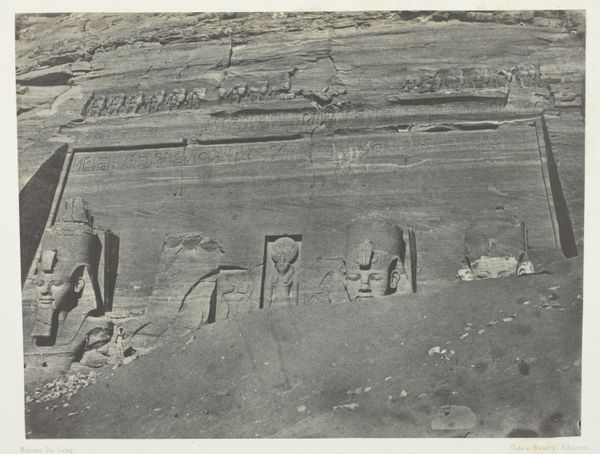
Abou-Sembil, Petit Spéos - Partie Gauche de la Façade 1851 - 1852
0:00
0:00
daguerreotype, photography, architecture
#
daguerreotype
#
ancient-egyptian-art
#
photography
#
ancient-mediterranean
#
architecture
Dimensions: 23.3 x 30.5 cm. (9 3/16 x 12 in.)
Copyright: Public Domain
Félix Teynard captured this photograph of the left side of the façade of the Small Speos at Abu Simbel with a Calotype. Observe these colossal statues of Ramses II. Carved directly into the rock face, they project an imposing image of divine kingship. Note the uraeus, the rearing cobra, on their brow – a potent symbol of royal power and divine authority in ancient Egypt, meant to ward off enemies. This symbol has persisted through millennia, reappearing in different forms across cultures, even as it shifts in meaning, from divine protection to emblems of national identity. Consider the psychological weight of such symbols. They tap into a deep, collective memory, evoking a sense of awe, reverence, and perhaps even fear. The image of the pharaoh, larger than life, is designed to impress upon the viewer the absolute power and authority of the ruler. It is a display that transcends time, resurfacing to take on new meanings.
Comments
No comments
Be the first to comment and join the conversation on the ultimate creative platform.
